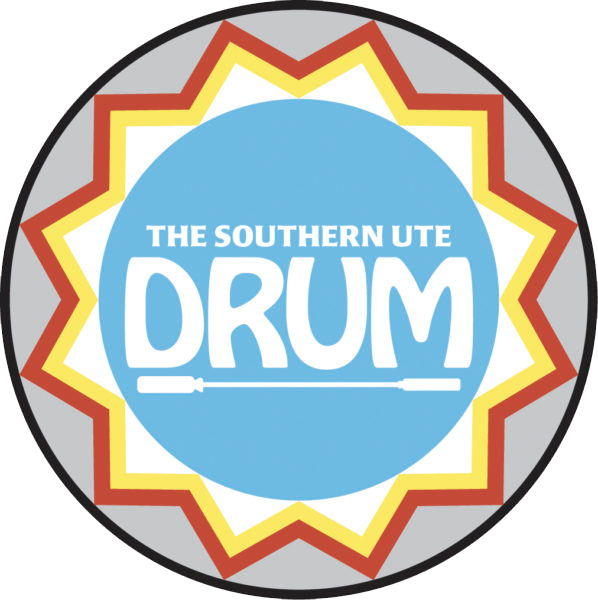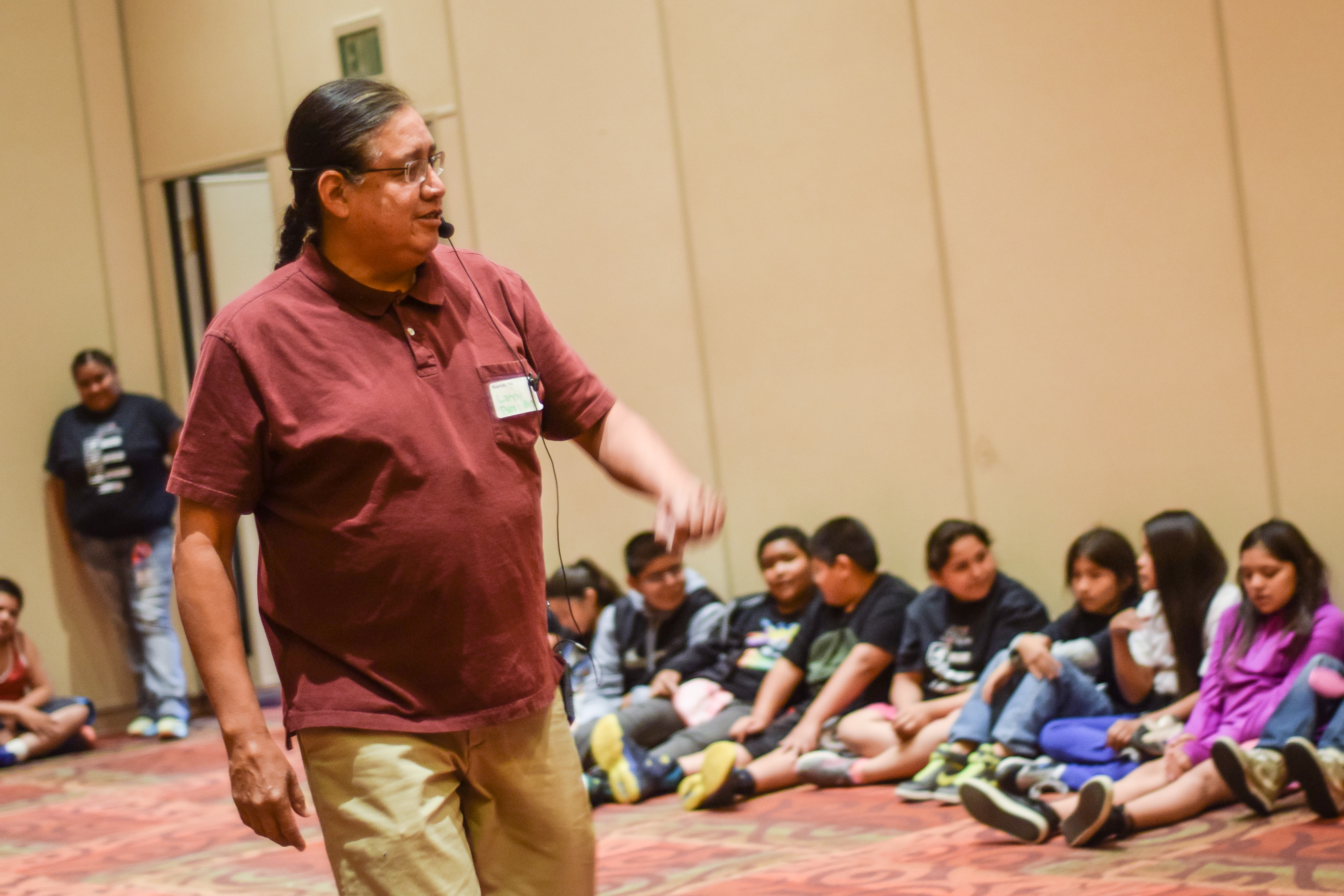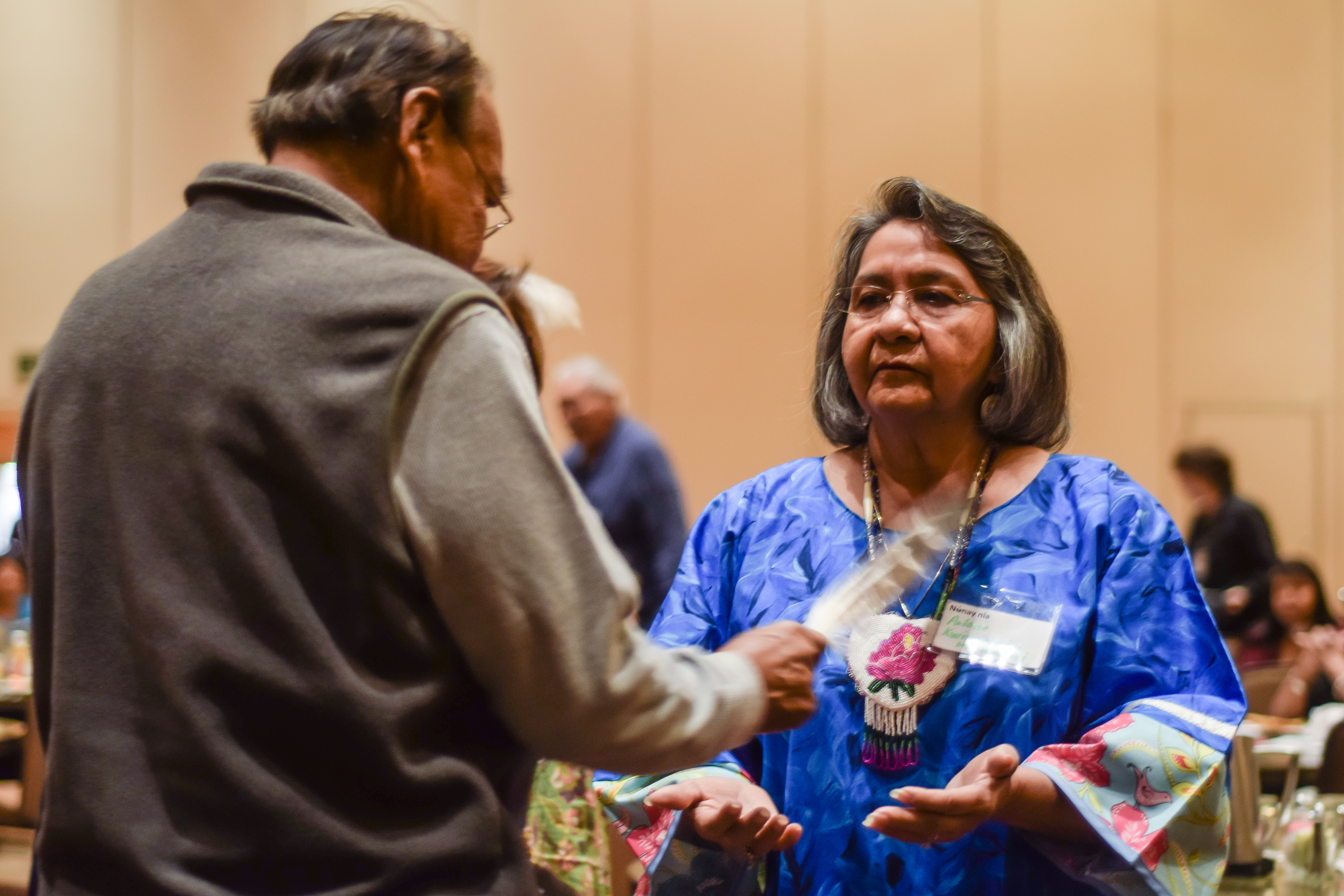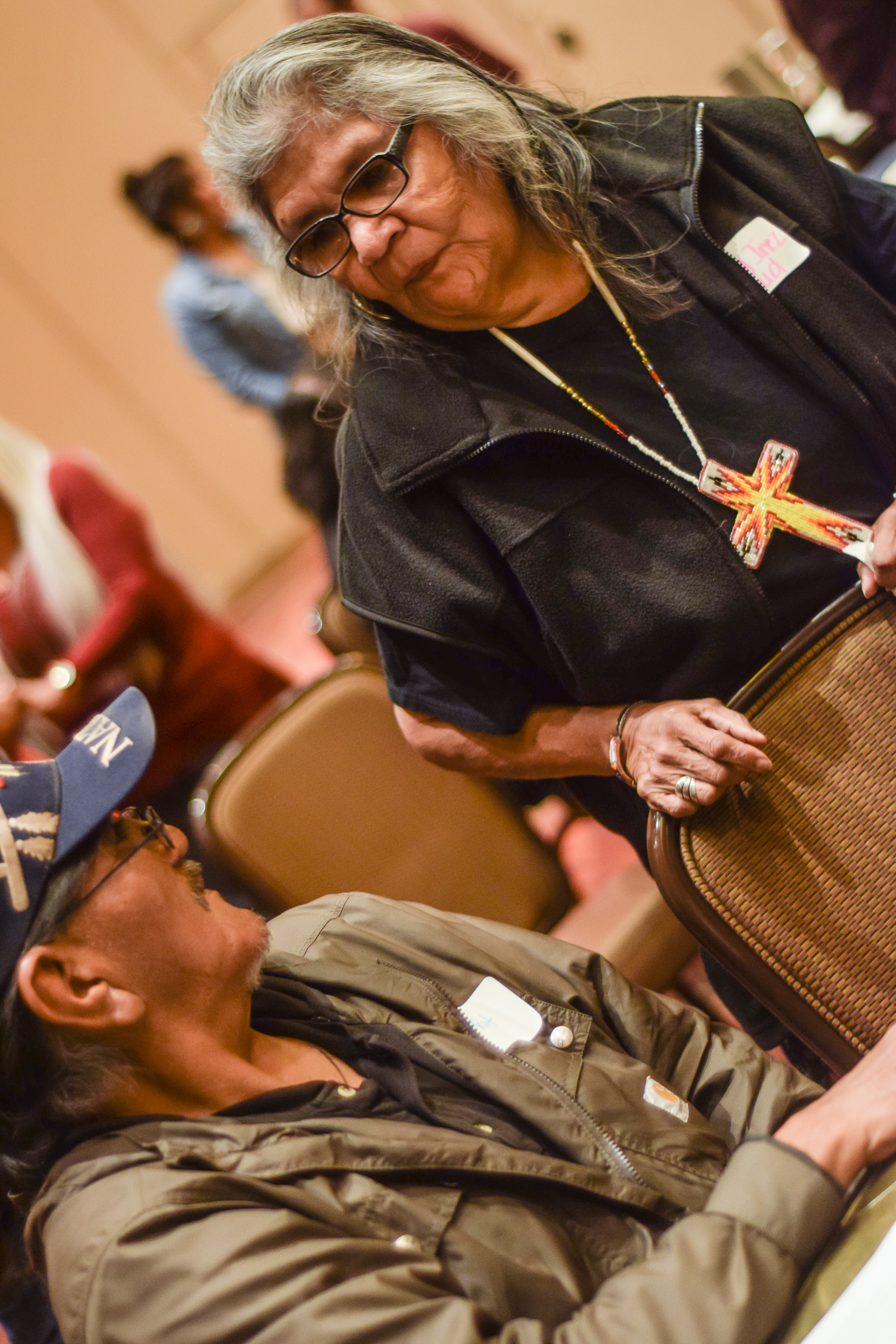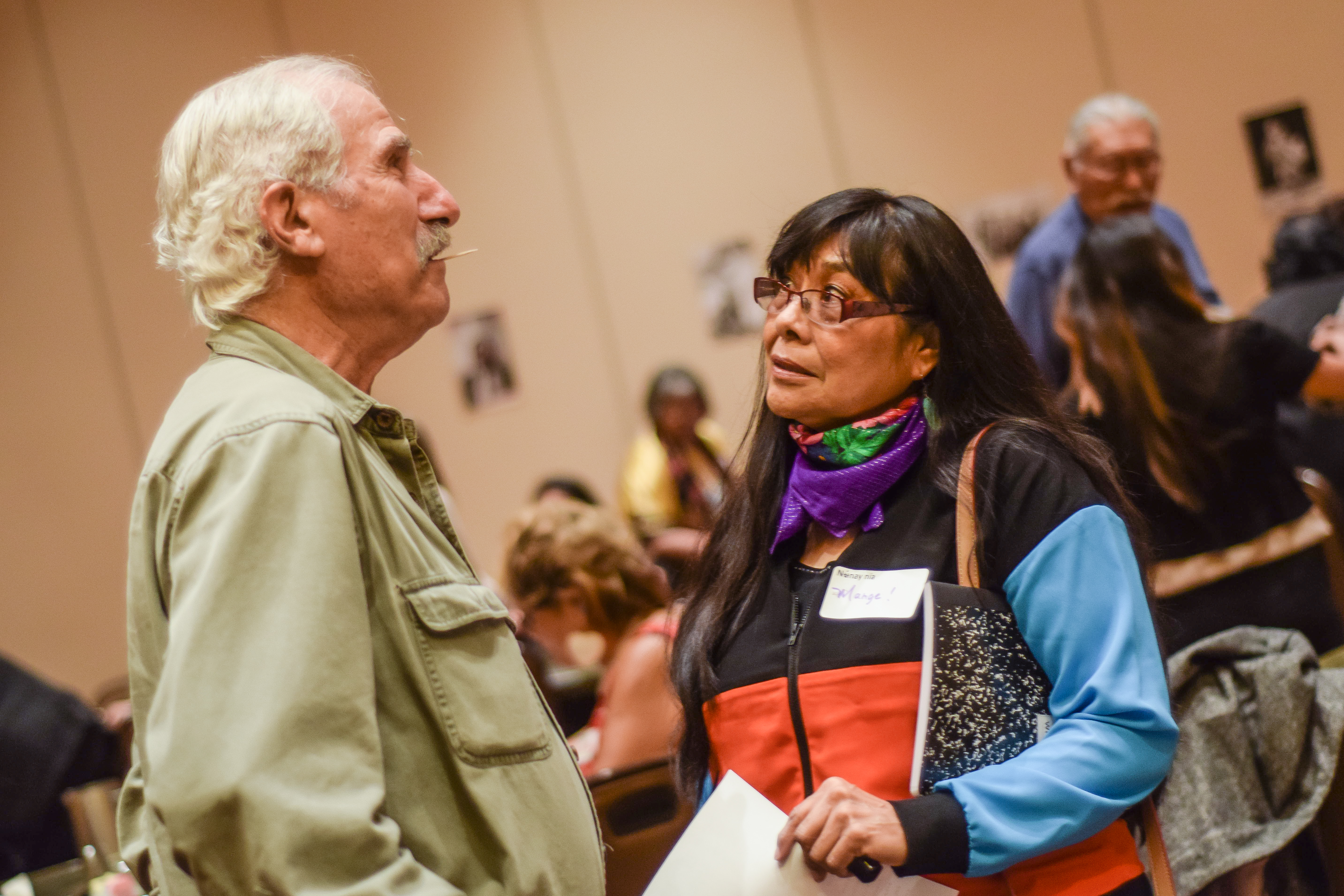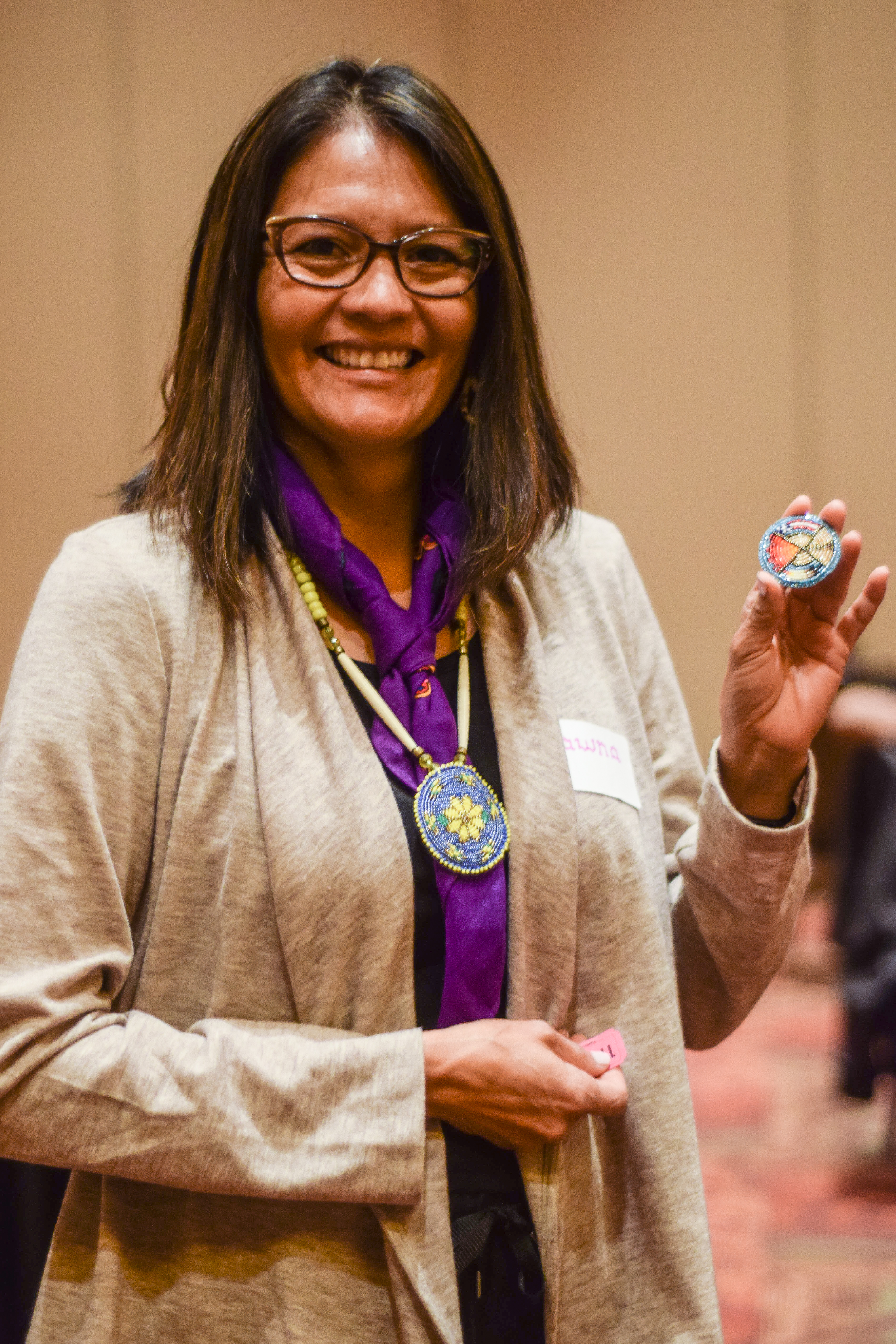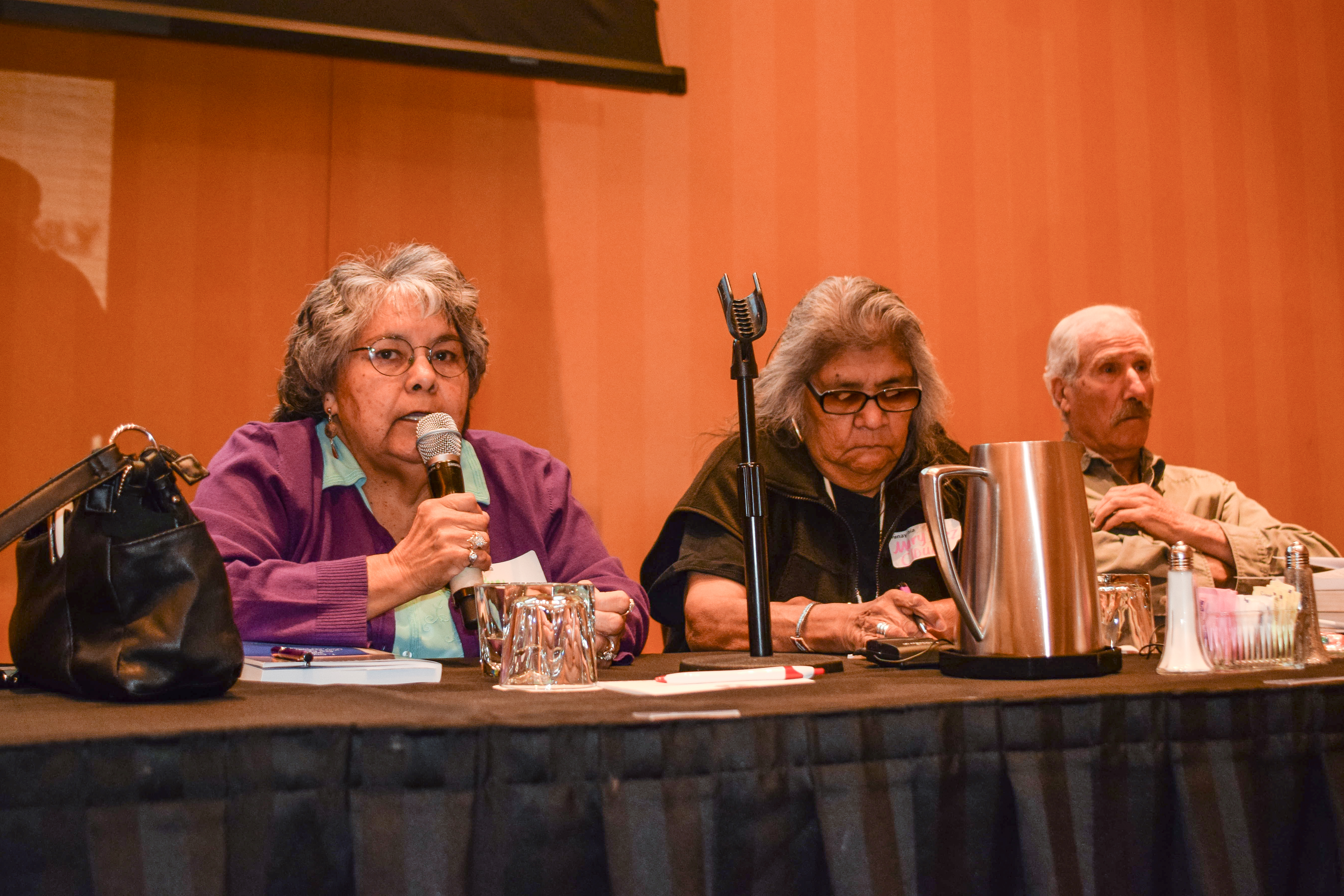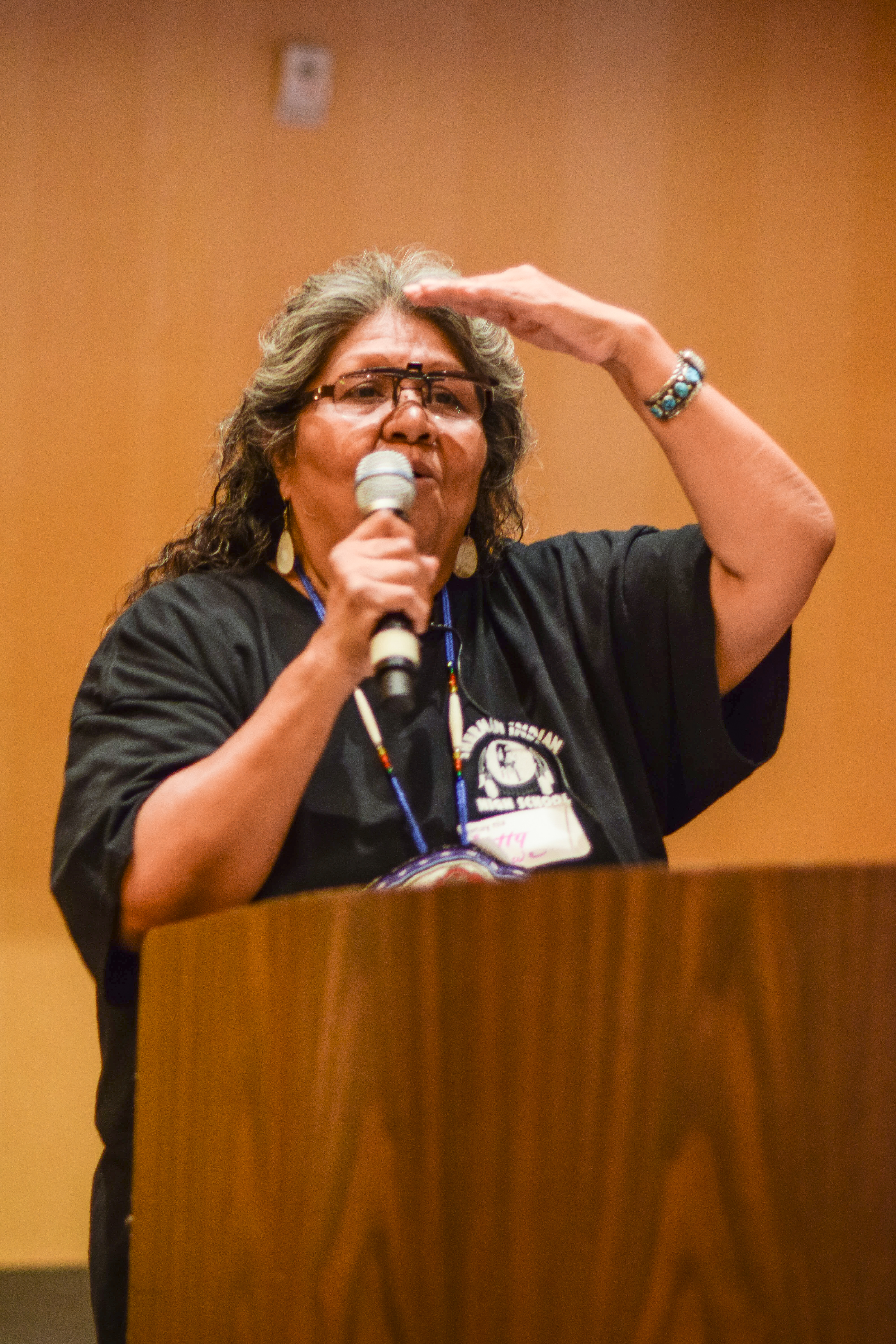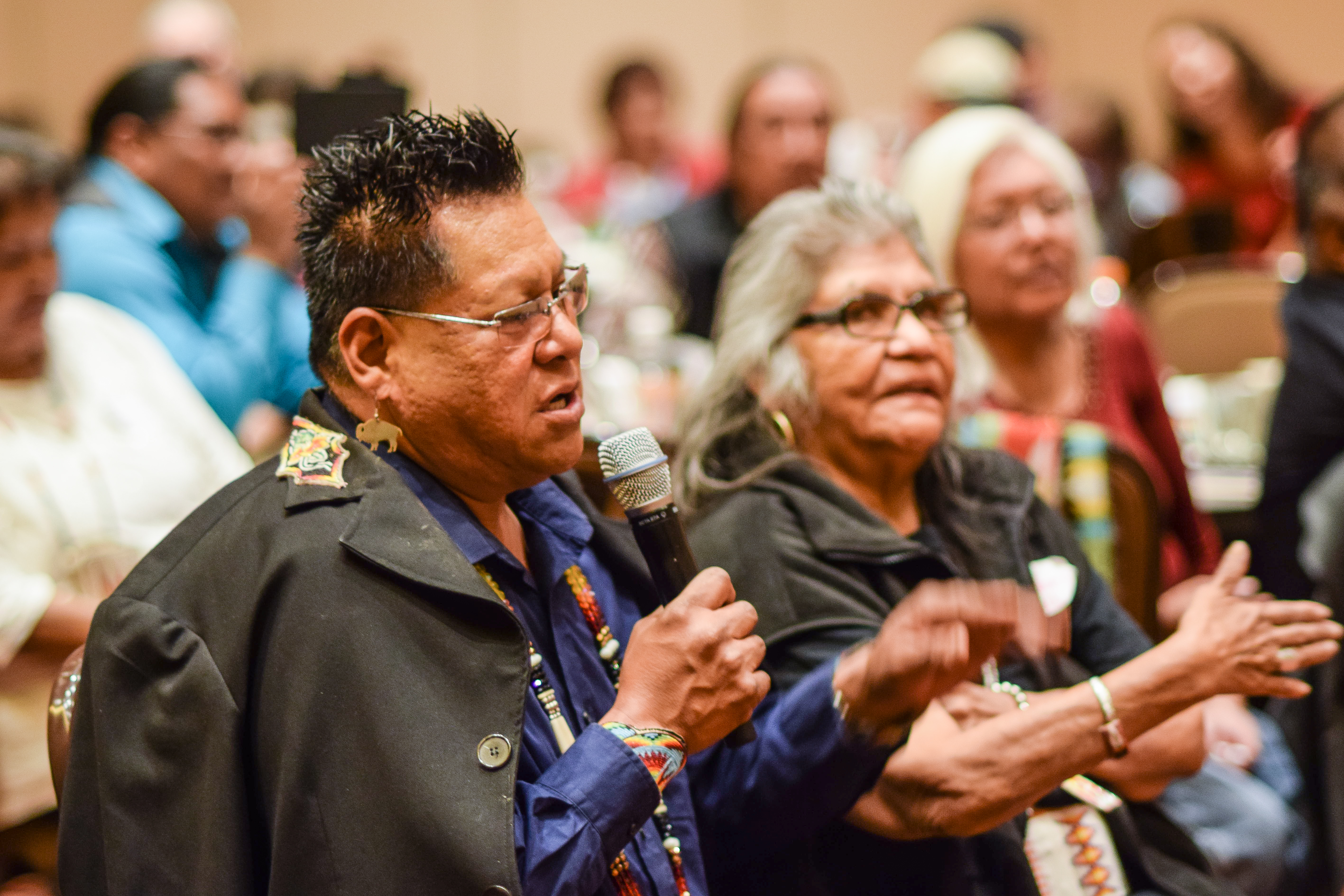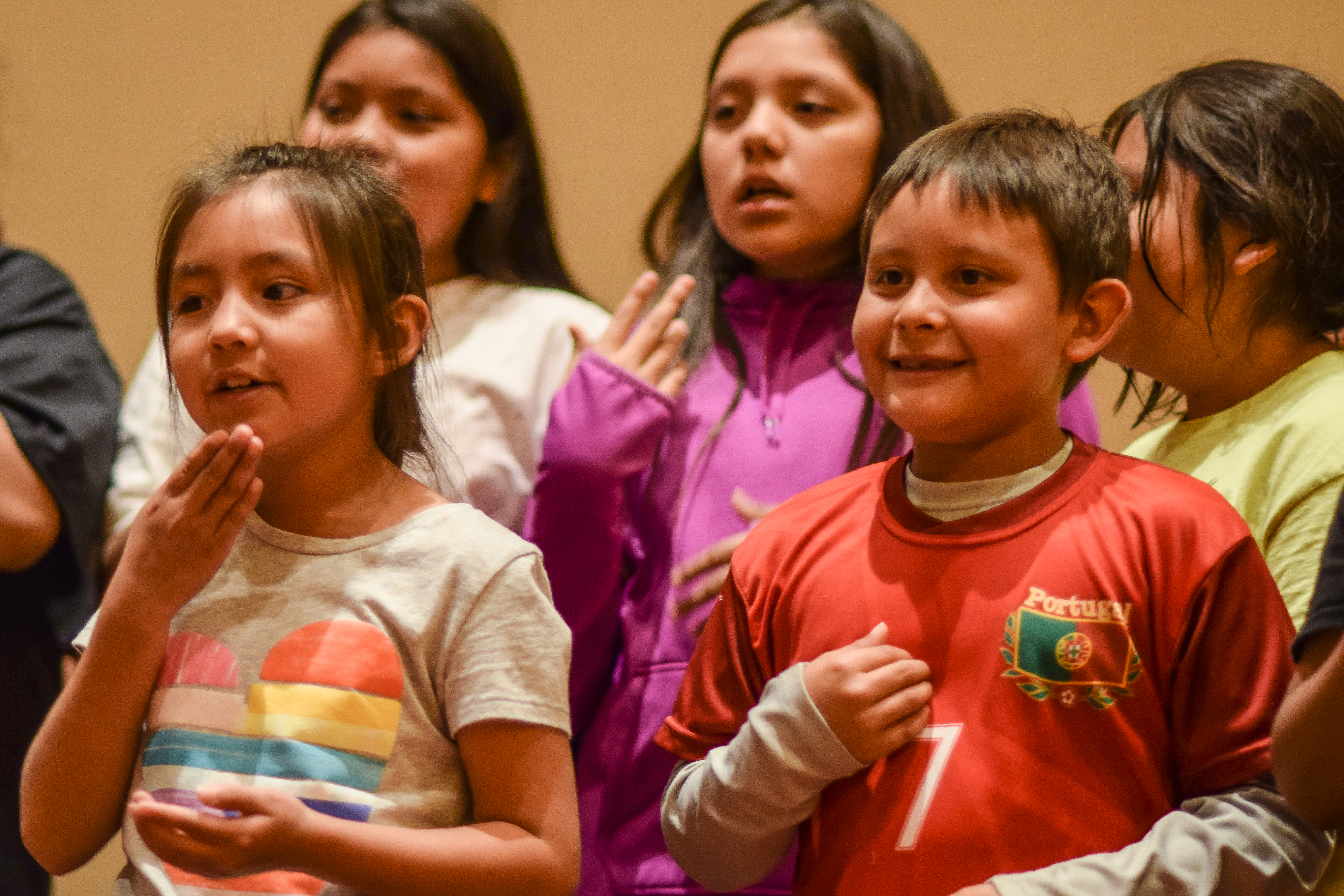Tribal members from the Southern Ute, Ute Mountain Ute, and Northern Ute Indian Reservations gathered at the Sky Ute Casino Resort on Friday Oct. 14 to take part in the 2nd Annual “Let us all wake up and speak Ute” conference. The conference spotlights on the history of the Ute language while bringing recognition to the younger generation.
Elwood Kent provided the opening prayer prior to a smudging session conducted by Jason Scott and Gilbert Dutchie. Afterwards, members from the Native American Youth Organization (NAYO) performed the Flag Song.
Southern Ute Tribal Chairman Clement J. Frost gave the opening address and stated, “We don’t know how long our language will be with us unless we continue to keep it strong. I’m glad that some of our elders are here to be apart of this program, and I appreciate those from the Northern Ute and Ute Mountain Ute Tribe who came to help keep our great language alive. Enjoy being able to speak the Ute language, and never forget to teach it to your children.”
Tribal elder Sage Remington reminisced on his younger days growing up with the language and gaining the influence to learn it.
“It’s good to see that this is still carrying on. We all speak different aspects of Ute, but we’re still related by language, blood, and spirit. When I was young, I would listen to these traditional songs that were sang in Ute. I didn’t quite understand them, but as I got older I paid more attention. They’re the songs of those who are gone. That shows how much our lives have changed, but we still have our culture to keep ourselves strong. We need to continue on with unity and harmony, and pass this knowledge and history to our young ones, because they will be the survivors.”
Tribal elder Pearl Casias joined fellow elder Mary Inez Cloud and Ignacio resident Tom Givon during a discussion about the Ute Language Dictionary that is available to all tribal members. It includes several introductory chapters that link the words of the Ute sounds system and alphabet, the grammar of word-usage, the derivation of new words from existing ones, and a detailed guidance to the structure of the dictionary.
“I’m used to being the only non-Ute person in the room for many years,” joked Tom Givon. “It’s good to know the knowledge of the historical language featured in these books. When I started to work with the Tribe, there was question in having faith in one another. My greatest nightmare is that these three books are going to be all that’s left of the Ute language, which is why its crucial to push the knowledge of it into schools and homes. The main thing is if we can keep the language alive in the minds, hearts, ears, and mouth.”
Later, Ute Mountain elder Betty Howe took the stage and invited attendees to join her in a traditional Ute sing-along.
“How are we going to teach our children?” Howe stated. “Our kids must be self-efficient and they need to go to school. We have to take care of ourselves, because what we put in our hearts is whom we become and grow up into. Love one another.”
The Tribe welcomed special enthusiast guest speaker Dr. Landon Real Bird from the Crow Nation to speak about recognizing Native heritage while making comments on Indigenous oppression.
“Let me share this one thing, the U.S. did a number on us Indian people,” he claimed. “You’re going to have to eat, educate, and govern on your own, and it’s going to have to be us as Indian people to tell ourselves what to do. If we don’t have these structures, there will be people in these corporate businesses that will want to buy our rights, resources, and holdings that we have.”
Real Bird added, “If we don’t organize, plan, teach, then we’re going to have a bad time … when we work together, we become stronger. But nowadays we have to deal with this dilemma of dividing and conquering. We have to realize we need to take control of these and identify that language is important and defines who we are – you cannot be taxed on your language.”
Real Bird continued his lecture by inviting students from the Southern Ute Indian Montessori Academy to join him in a sign language exercise where they sang the song titled, “Hello My Friend”, and an original titled, “Bethlehem”, that was written by Betty Howe.
“There are various methods to teach the language,” commented Real Bird. “You learn it by listening. Learn by doing, and learn in a non-threatening way.”
